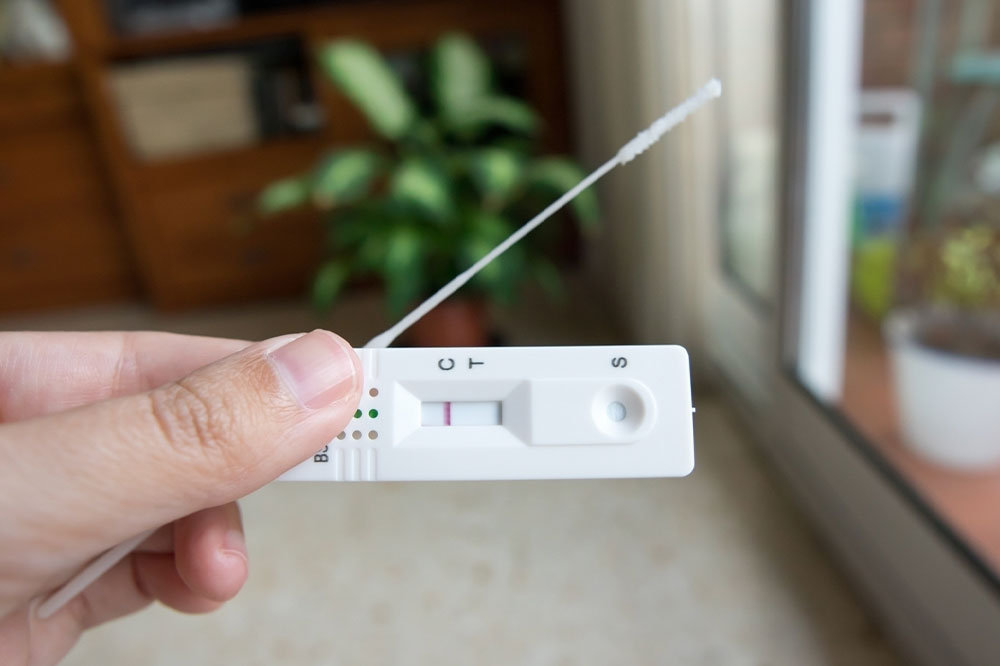
Factors to consider when using a home test
A core prevention tactic to stay safe from COVID-19 is to practice social distancing, wear masks, and frequently wash hands to avoid any contact with the virus to the eyes, nose, or mouth. Home tests or rapid tests became popular to ensure testing is safe and requires minimal outside contact. These tests are efficient, and people are encouraged to take these since the pandemic is not over. Here’s what one needs to know about the tests.
What are home tests?
These test kits, which are called “home tests,” “at-home tests,” or even “OTC or Over-the-Counter tests,” help a person give results of whether or not one is COVID-19 positive within a couple of minutes. These tests are important and encouraged, especially for people traveling a lot and working in crowded spaces, interacting with groups of people. Regular testing makes it possible for people to reduce the chances of spreading the virus to anyone else.
When to take the test?
Many people do regular at-home rapid tests to ensure they are not carrying the virus, even if they know their social circle is not COVID-19 positive. This is to know that one is not a carrier of the virus and can prevent the further spreading of the disease.
Other times to take the test would be:
If a person shows any COVID-19 symptoms
Test immediately to know whether one has been exposed to the virus.
If one knows one was exposed to someone with COVID-19
A person will need to wait for 5 days before taking the test to get a more accurate result. If one takes the test and gets a negative result, don’t hesitate to test a couple more times to be sure.
If a person is going to a crowded gathering place, especially indoors
Take the test immediately before the gathering or as close to the event timeline as possible. Since the gathering may involve individuals at high risk of catching the virus, it is especially important to be thorough with testing.
Results
If one has tested positive, here’s what one needs to do:
Stay quarantined for at least 5 days at home, alone.
Make sure to inform the close contacts so they can do the tests and follow the procedure.
Watch out for symptoms. If they are mild and can be treated with the doctor’s instructions and treatment plan at home, follow the procedure. If the symptoms get worse, seek emergency care immediately.
If an individual is not isolated in the house, wear a well-fitted mask, and CDC also recommends having N95 or KN95 respirators handy.
If the test results are negative, one may still have to stay cautious and test again in 1-2 days to eliminate the possibility of any virus detection.
Buying home or rapid tests
These tests are readily available at all pharmacies and retail stores. They can also be ordered online and delivered right to one’s doorstep. If one has health insurance, the insurer may reimburse the cost of these self-tests. One will have to check the FDA’s list of all the authorized tests covered under this policy. Some healthcare departments in a locality may also be giving out free test kits, so keep an eye out to see if any are available. If, for any reason, a person is unable to procure these rapid home tests, get in touch with community testing sites or the local health department, and they will help out with available options.
FDA information
It is important to know that while at-home rapid tests are easy to use and procure, the testing is not as accurate as laboratory-based molecular tests like the PCR test. So if one is getting negative results on the test, it is recommended (especially if a person is exposed to anyone with the virus in one’s circle) to do the tests a couple more times to eliminate the possibility of infection. Also, using the same brand home test kit is not mandatory. One can use multiple brands, whichever is available.




